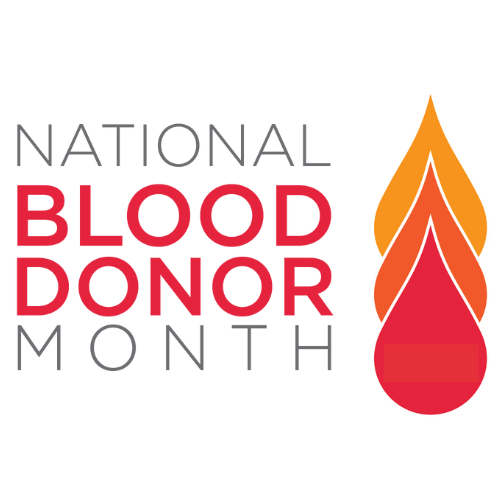Spread the word across your organization.
General Newsletter Content:
Did you know that every two seconds in America, someone urgently needs blood? This need extends beyond unexpected emergencies like car crashes, encompassing a wide range of medical treatments such as cancer therapies, cardiovascular and orthopedic surgeries, and organ and bone marrow transplants.
Only three percent of eligible Americans currently donate blood, despite 65 percent of the population being eligible to do so. Additionally, only 12 percent of blood donations come from individuals in communities of color, and there was a 40% increase in donors aged 65 and older in 2021 compared to 2019, highlighting the need for focused recruitment efforts on younger generations.
Given the current state of blood donations, there is an urgent need for younger, more diverse donors. National Blood Donor Month, celebrated every January, provides an opportunity to raise awareness about the importance of blood donation and to honor those who have already made a life-saving contribution.
The inaugural National Blood Donor Month was proclaimed by President Richard Nixon and held in January 1970, with the aim of acknowledging voluntary blood donors and encouraging more individuals to donate for the first time. Despite the changes that have occurred in the last five decades, the demand for blood remains constant, as does the selflessness of those who answer the call to give.
We express our heartfelt gratitude to all those who regularly donate blood and encourage all those eligible to join them. Such ongoing generosity not only saves lives today but also extends hope for a brighter tomorrow for countless individuals in need.
Medical Professional Newsletter Content:
Every January, we celebrate National Blood Donor Month, a time to honor the selflessness of blood donors and raise awareness about the critical need for blood donations. In the United States, nearly 7 million people selflessly give blood every year, serving as a lifeline for countless individuals in need.
One in seven patients entering a hospital requires the availability of blood for various medical reasons. This includes trauma victims, patients battling sickle cell disease or Thalassemia, as well as those who require organ or bone marrow transplants. Additionally, a staggering 25 percent of all blood donations are used for cancer patients, and blood transfusions are essential in one out of every 83 newborn deliveries in America today.
The need for blood is urgent and constant. Every two seconds, someone in our country requires blood, and on any given day, an average of 42,000 blood components are used by patients. That amounts to more than 15 million red blood cells, platelets, and plasma transfused last year alone.
Despite this high demand, only three percent of all Americans choose to donate blood. To compound the issue, there has been a significant 60% drop in donations from 16–18-year-olds and a 31.9% decrease in donations from 19–24-year-olds in 2021 compared to 2019. This decline can largely be attributed to the restrictions imposed on blood drives during the COVID-19 pandemic, particularly on school campuses.
It is crucial to address this shortage by not only increasing short-term blood donations but also cultivating a younger and more diverse donor pool for long-term sustainability.
As medical professionals, we recognize and emphasize the importance of ensuring a sufficient blood supply when it is needed most. We are immensely grateful to all the blood donors who play a vital role in saving lives with their generous contributions.
Join us in commemorating National Blood Donor Month. We express our deep gratitude to America’s voluntary blood donors while encouraging more people to make this lifesaving difference to give. Together, we can ensure that blood remains readily available for every patient who relies on it.

